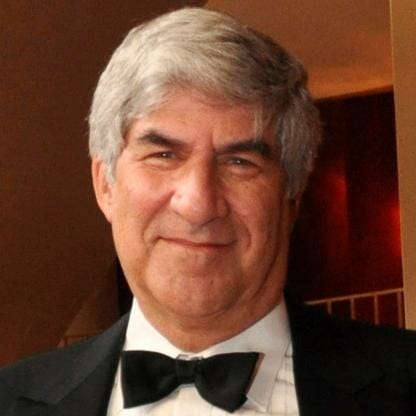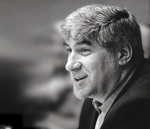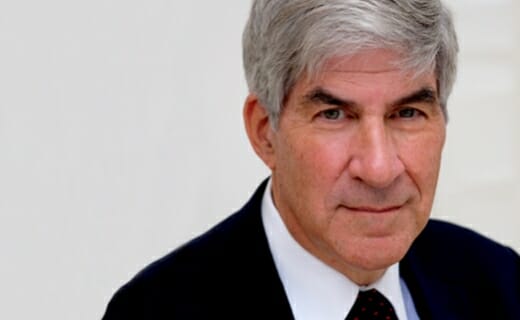
Where does Kovner generate profits from? Consider this from Global Macro Funds:
Mr Kovner has reportedly attributed his money making success to “stupid governments”, implying that the policy mistakes of central banks and governments causes disequilibria in financial markets that can be exploited.
Bruce Kovner was also heavily influenced by Michael Marcus (a student of Ed Seykota’s):
Michael taught me one thing that was incredibly important. He taught me that you could make a million dollars. He showed me that if you applied yourself, great things could happen. It is very easy to miss the point that you really can do it.
What kind of risks did Kovner take? How much did he want it? Consider excerpt from The New Investment Superstars:
Kovner borrowed $3,000 on his MasterCard in early 1977 and began trading on his own. He made $1,000 on his first two trades ? copper and interest rate futures. Kovner says his earlier trading experience were the most memorable. The first time he lost control of the trading process was in the soybean market. It is seared into my memory. A shortage developed in soybeans, running his $4,000 position up to $45,000 in six weeks. In a moment of insanity, I discarded a hedge limiting losses if prices turned down, which they did. In a panic, he liquidates his position, escaping with a loss of $23,000. Yet he still had $22,000, five times what he started with. I had a huge gain but lost half before getting out? I lost half the profit in an hour. I closed out the trade and was physically sick for a week. In retrospect that was a very good thing, says Kovner. It helped me understand risk and create structures to control risk.
What is Kovner’s background? Financial World has some insight:
A music aficionado, he has best been known to treat friends to private performances at his New York City home by up-and-coming musicians, often from New York’s famed Julliard School. Six feet two inches tall, with a neatly trimmed graying beard and a professional manner, Kovner grew up in the San Fernando Valley east of Los Angeles, the son of an engineer. When a bad case of writers block stymied his quest for a Harvard Ph.D., Kovner drove a cab to pay the rent, took harpsichord lessons at Julliard and dabbled at a succession of pursuits while seeking this true calling. In 1976 he found it: currencies and futures speculating.

More insights from his Market Wizards interview:
Michael [Marcus] taught me one thing that was incredibly important… He taught me that you could make a million dollars. He showed me that if you applied yourself, great things could happen. It is very easy to miss the point that you really can do it. He showed me that if you take a position and use discipline, you can actually make it.”
I’m not sure one can really define why some traders make it, while others do not. For myself, I can think of two important elements. First, I have the ability to imagine configurations of the world different from today and really believe it can happen. I can imagine that soybean prices can double or that the dollar can fall to 100 yen. Second, I stay rational and disciplined under pressure.
What I am really looking for is a consensus the market is not confirming.
I like to know that there are a lot of people who are going to be wrong.
One of the jobs of a good trader is to imagine alternative scenarios. I try to form many different mental pictures of what the world should be like and wait for one of them to be confirmed. You keep trying them on one at a time. Inevitably, most of these pictures will turn out to be wrong — that is, only a few elements of the picture may prove correct. But then, all of a sudden, you will find that in one picture, nine out of ten elements click. That scenario then becomes your image of the world reality.
The Importance of risk management is in Kovner’s blood:
The first rule of trading — there are probably many first rules — is don’t get caught in a situation in which you can lose a great deal of money for reasons you don’t understand.
I would say that risk management is the most important thing to be well understood. Under trade, under trade, under trade is my second piece of advice. Whatever you think your position ought to be, cut it at least in half.
Through bitter experience, I have learned that a mistake in position correlation is the root of some of the most serious problems in trading. If you have eight highly correlated positions, then you are really trading one position that is eight times as large.
Whenever I enter a position, I have a predetermined stop. That is the only way I can sleep. I know where I’m getting out before I get in. The position size on a trade is determined by the stop, and the stop is determined on a technical basis.
My experience with novice traders is that they trade three to five times too big. They are taking 5 to 10 percent risks on a trade when they should be taking 1 to 2 percent risks.
I never think about stop vulnerability, because the point about a technical barrier — and I’ve studied the technical aspects of the market for a long time — is that the market shouldn’t go there if you’re right.
The only thing that disturbs me is poor money management. Every so often, I take a loss that is significantly too large. But I never had a lot of difficulty with the process of losing money, as long as losses were the outcome of sound trading techniques.
A common mistake is to think of the market as a personal nemesis. The market, of course, is totally impersonal; it doesn’t care whether you make money or not.
Whenever a trader says ‘I wish,’ or ‘I hope,’ he is engaging in a destructive way of thinking because it takes attention away from the diagnostic process.
Kovner is a trend following trader:
For me, technical analysis is like a thermometer. Fundamentalists who say they are not going to pay any attention to the charts are like a doctor who says he’s not going to take a patient’s temperature. But, of course, that would be sheer folly. If you are a responsible participant in the market, you always want to know where the market is — whether it is hot and excitable, or cold and stagnant. You want to know everything you can about the market to give you an edge.
The principle characteristic of a bear market is very sharp down movements followed by quick retracements… In a bear market, you have to use sharp counter-trend rallies to enter positions.
Technical analysis, I think, has a great deal that is right and a great deal that is mumbo jumbo… There is a great deal of hype attached to technical analysis by some technicians who claim that it predicts the future. Technical analysis tracks the past; it does not predict the future. You have to use your own intelligence to draw conclusions about what the past activity of some traders may say about the future activity of other traders.
Technical analysis reflects the voice of the entire marketplace and, therefore, does pick up unusual behavior. By definition, anything that creates a new chart pattern is something unusual. It is very important for me to study the details of price action to see if I can observe something about how everybody is voting. Studying the charts is an absolutely critical stance and alerts me to existing disequilibria and potential changes.
Kovner is another in the long line of alumni from the legendary Commodities Corporation.

Bruce Kovner was originally profiled in the Market Wizards
Trend Following Systems
Want to learn more and start trading trend following systems? Start here.

